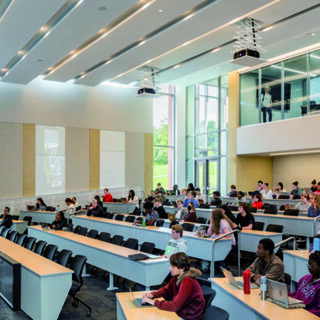Making Every Square Foot Count: When Needs Grow and Budgets Don’t
In the 12 years between the conception and funding of Thurgood Marshall Hall and when an architect was hired to design it, the University of Maryland had added four research centers with 40 faculty and staff, creating a 20% shortfall in space and funding. Then at 60% construction drawings, the School of Public Policy added an undergraduate program. Learn how the university made creative use of every available corner of the new building to provide the program the students and faculty require.















